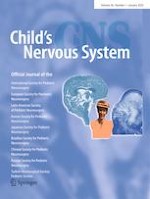Erschienen in:

09.11.2019 | Technical Notes
Frameless stereotaxy: It is all about precision
verfasst von:
Mostafa M. E. Atteya
Erschienen in:
Child's Nervous System
|
Ausgabe 1/2020
Einloggen, um Zugang zu erhalten
Abstract
Background
Modern neurosurgery is nowadays based on technological advances. Intra-operative image guidance systems are frequently utilized in the everyday neurosurgical practice. Frameless stereotactic procedures (FSPs) require a great deal of technical abilities and precautions. Frameless stereotaxy mandates a high degree of problem-solving attitude and on-the-spot neurosurgeon’s creativity.
Objective
In these technical notes, the author aims at presenting his experience in frameless stereotaxy for more than 10 years in the form of easily digestible tricks and pitfalls during every step of FSPs.
Methods
The author retrospectively distilled the tricks and pitfalls of the FSPs performed by him during the past 10 years according to their chronological status in a how-I-do-it fashion.
Results
Chronologically speaking, phases relating to any FSP were divided into five phases: (1) preoperative image acquisition, (2) pre-operative planning, (3) machine setup, positioning, and registration; (4) operative techniques; and (5) post-operative precautions. Faults in any of these phases can result in failure of the procedure or in faulty surgery with subsequent complications. Each stage is addressed in a how I do it fashion, questions and answers, bulleted or numbered tricks and pitfalls, and, in some instances, what-to-do-if scenarios were given.
Conclusion
Frameless stereotaxy is a well-established neurosurgical practice. Many neurosurgeons are only aware with the bare minimum of the technical aspects of frameless stereotaxy and, subsequently, they practice the bare minimum of its applications. FSPs entail a great deal of technical tricks and pitfalls. Awareness of these techniques should be the target of every neurosurgeon.